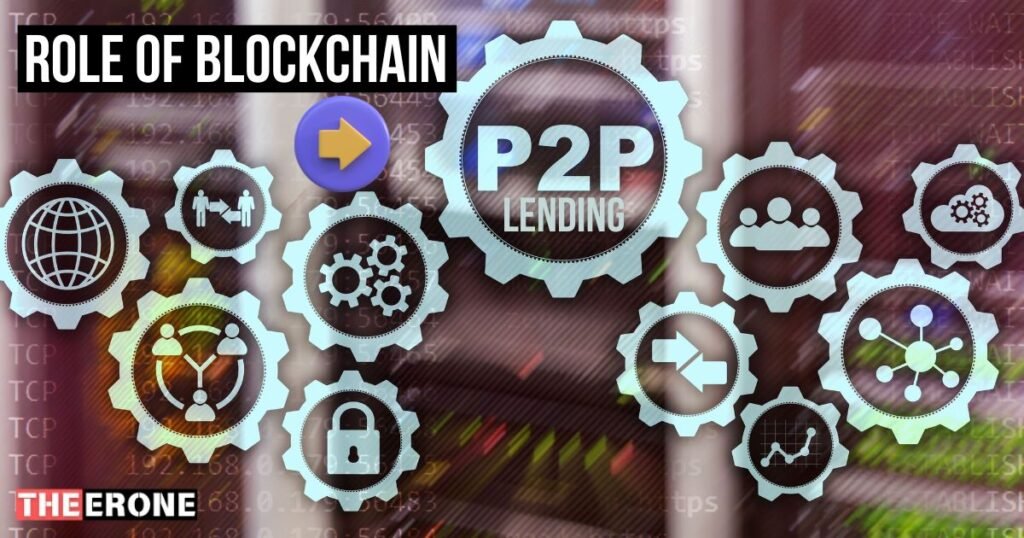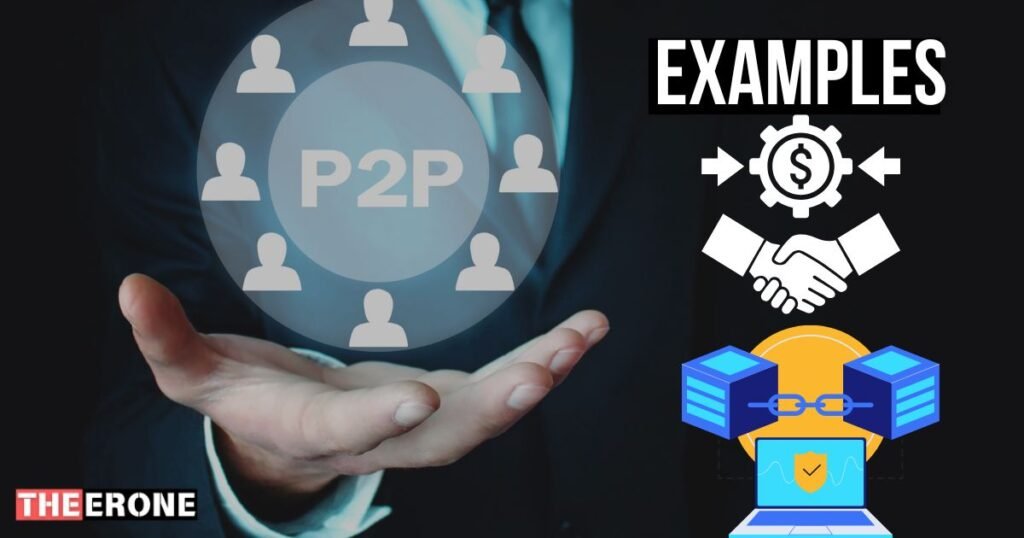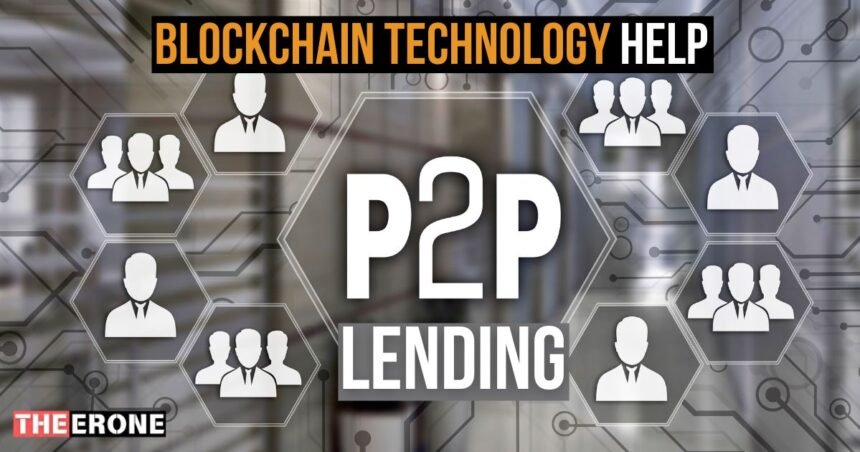Peer-to-peer (P2P) lending is a system that connects borrowers directly with lenders. It eliminates the need for traditional financial institutions, making the process easier and more accessible. However, trust, high fees, and data security are common challenges in P2P lending.
Blockchain technology offers a solution with its unique features. It is decentralized, transparent, and secure, ensuring data cannot be altered once recorded. By using blockchain, P2P lending becomes more efficient and reliable. It reduces intermediaries, lowers transaction costs, and builds trust between parties.
Additionally, the transparency of blockchain ensures fairness and prevents fraud. Hence, blockchain technology is a game changer in transforming P2P lending into a safer and more efficient financial system.
in this post we will learn in detail about How Does Blockchain Technology Help in Peer-to-Peer Lending.
Traditional P2P Lending Systems
How Traditional P2P Lending Works
Traditional Peer-to-Peer (P2P) lending relies on centralized platforms to act as intermediaries. These intermediaries help connect borrowers and lenders on a single platform for transactions. They are responsible for verifying user identities and performing thorough credit checks before approvals.
Additionally, they manage all financial transactions, ensuring accurate tracking and record-keeping. Although this seems organized, heavy reliance on these platforms can sometimes lead to inefficiencies.
Borrowers and lenders must trust the intermediary entirely for security and transparency. Centralized control can also limit flexibility and increase dependency on these third-party services.
Also Read: How Enterprises are Leveraging AI?
Challenges in Traditional P2P Lending
Using intermediaries in P2P lending can result in higher operational costs for users. These extra costs include processing fees, platform charges, and third-party verification expenses. Another significant challenge is the risk of data breaches, posing privacy and security concerns.
Many traditional systems fail to protect sensitive financial information from cyber threats. Limited accessibility further hinders global users from effective cross-border lending or borrowing opportunities.
The need for international compliance and the lack of streamlined processes add complexity. These challenges make traditional systems less efficient and more complex to scale globally.
Role of Blockchain in P2P Lending

Blockchain technology addresses many challenges in traditional P2P lending by offering innovative solutions.
1. Decentralization
- Smart contracts eliminate the need for intermediaries, ensuring direct interactions.
- Borrowers and lenders can connect without third-party involvement, saving time and resources.
2. Transparency and Trust
- Blockchain provides immutable transaction records, creating trust between all participants.
- Users enjoy real-time access to loan agreements and payment histories for better clarity.
3. Cost Reduction
- The absence of intermediaries reduces transaction and operational fees significantly.
- Borrowers and lenders save money thanks to fewer third-party charges in the system.
4. Enhanced Security
- Blockchain secures transactions and data using advanced cryptographic algorithms.
- Sensitive financial information becomes more protected from hackers and unauthorized access.
5. Global Accessibility
- Blockchain enables seamless cross-border lending with fewer barriers and faster processes.
- Cryptocurrencies simplify international transactions, making lending accessible to users worldwide.
Blockchain introduces efficiency, security, and inclusivity, solving existing points in traditional P2P systems.
Also Read: How Does Blockchain Technology Benefit Businesses in 2025
Features of Blockchain-Driven P2P Lending Platforms
Smart Contracts
Blockchain smart contracts automate loan agreements and repayment, reducing human intervention and errors.
Tokenization
Tokenized assets allow fractional lending, enabling smaller investments and increased user access.
Decentralized Identity Systems
Blockchain-based systems ensure secure credit scoring and identity verification, protecting users’ personal data.
Regulatory Compliance
Integrated compliance measures like KYC and AML meet regulations while streamlining user processes.
Benefits of Blockchain in P2P Lending
1. For Borrowers
Borrowers benefit from quicker loan approvals as blockchain efficiently automates traditional credit processing steps. This reduces delays caused by manual reviews, ensuring borrowers can access funds when urgently needed and enhancing overall user satisfaction.
Blockchain eliminates intermediaries, reducing broker and processing fees and resulting in lower interest rates. Borrowers enjoy more affordable loans, making it easier to handle financial needs and preventing excessive repayment burdens.
2. For Lenders
Blockchain ensures explicit fund tracking, showing borrowers’ repayment activities securely and transparently. Lenders can make better decisions with real-time visibility, reducing the chances of fraud or misuse of funds.
Lenders can distribute funds to multiple borrowers using blockchain platforms, minimizing financial risk. This approach ensures safer investments and provides various portfolios for better returns, catering to financial security.
3. For the Ecosystem
Blockchain offers scalable solutions by processing more transactions smoothly as platform users grow. Even with increasing demand, it ensures reliability and efficiency, enhancing the ecosystem’s usability and trustworthiness.
Blockchain drives financial innovation by creating safer, more accessible, faster lending methods worldwide. New models offer users secure platforms that serve all financial backgrounds, promoting inclusivity and long-term economic growth.
Examples of Blockchain-Powered P2P Lending Platforms

Several blockchain-powered companies, such as SALT and ETHLend, are transforming peer-to-peer lending. SALT ensures better loan accessibility by enabling users to borrow money using the currency as collateral.
ETHLend links lenders and borrowers worldwide through smart contracts while maintaining accessibility and reducing intermediaries’s costs. These platforms showcase how blockchain simplifies lending by offering a secure and decentralized framework.
One notable example of blockchain impact is ETHLend, which helps a small business secure a loan directly from an international lender. This eliminated traditional barriers, such as high fees or strict credit requirements.
Another success comes from SALT, where users have avoided selling cryptocurrencies during market downturns by obtaining loans against digital assets. These real-life examples prove blockchain platforms improve trust, security, and accessibility in lending ecosystems.
Challenges and Limitations
Technological Barriers
Blockchain solutions can be challenging to implement and involve a lot of knowledge and resources. The difficulty many organizations have in understanding and implementing blockchain may delay adoption. Ensuring scalability and efficiency in blockchain networks remains a formidable technical challenge.
Regulatory Concerns
Laws about blockchain and cryptocurrencies vary widely between countries and regions. Businesses must carefully follow these regulations, which can complicate operations. The absence of universal standards also creates uncertainty, making it harder for organizations to invest in blockchain technology confidently.
Adoption Challenges
Getting users to trust and understand blockchain technology takes time and work. Many people may resist accepting new systems since they are unfamiliar with blockchain. Improving adoption rates requires educating users and clearing up common concerns.
Volatility of Cryptocurrencies
The value of cryptocurrencies frequently changes, creating dangers to lending repayments and banking transactions. This unpredictability can deter individuals and businesses from relying on crypto-based systems. Stable alternatives or improved risk management strategies are needed to address these challenges.
Future of Blockchain in P2P Lending
Predicted Trends
Decentralized finance systems are expected to grow, giving lenders and borrowers more excellent options. By doing away with the need for intermediaries, these platforms lower costs and boost user efficiency in peer-to-peer lending marketplaces worldwide.
Blockchain and artificial intelligence will likely enhance credit scoring and risk assessment. This integration can make lending safer with improved borrower data analysis, trust, and a reduction in loan defaults.
Potential Innovations
Future systems may blend blockchain with traditional banking to create balanced hybrid models. These systems could provide the transparency of blockchain while maintaining regulatory oversight, offering users a secure and trustworthy lending solution.
FAQs
What is peer-to-peer lending?
Peer-to-peer lending avoids traditional banks by connecting lenders and borrowers directly through online platforms. Lenders receive interest on their money, while borrowers obtain loans more quickly.
How does peer-to-peer lending work?
On platforms, borrowers submit loan requests, which lenders then fund after analyzing the details. Interest is added to payments, which benefits both the borrower and the lender.
Is blockchain a cure for peer-to-peer lending?
Blockchain can improve peer-to-peer lending by enhancing security, reducing fees, and ensuring transparency. It fixes trust issues while making lending faster and more efficient.
What is the use of blockchain in lending?
Blockchain ensures secure transactions, removes intermediaries, and keeps clear records for all participants. This leads to lower costs, more fairness, and faster loan processing.
How does blockchain technology address the security and trust issues in peer-to-peer networks?
Blockchain utilizes encryption and distributed protocols to protect against fraud, ensure security, and foster trust. Transparency is increased by enabling all network users to validate transactions.
Is blockchain peer-to-peer?
Yes, blockchain is a peer-to-peer system allowing direct, secure transactions without intermediaries. It uses technology to manage trust and data among participants.
What are the advantages of peer-to-peer lending?
Lower interest rates, quicker loan approval, and less need for banks are all benefits of peer-to-peer lending. Its effectiveness and flexibility are helpful to both lenders and borrowers.
Conclusion
A significant component in the transformation of peer-to-peer lending is blockchain. It enhances accessibility for borrowers worldwide, lowers costs by eliminating intermediaries, and fosters trust through transparent transactions. These benefits make lending easier, more secure, and fairer for all participants.
Blockchain offers practical solutions to the high costs and limited accessibility of traditional lending systems. Due to blockchain technology, more people may be able to access the financial assistance they require.
The time has come for developers, borrowers, and lenders to work jointly. By selecting blockchain, we can create an efficient, safe, and advantageous loan ecosystem for all participants.












